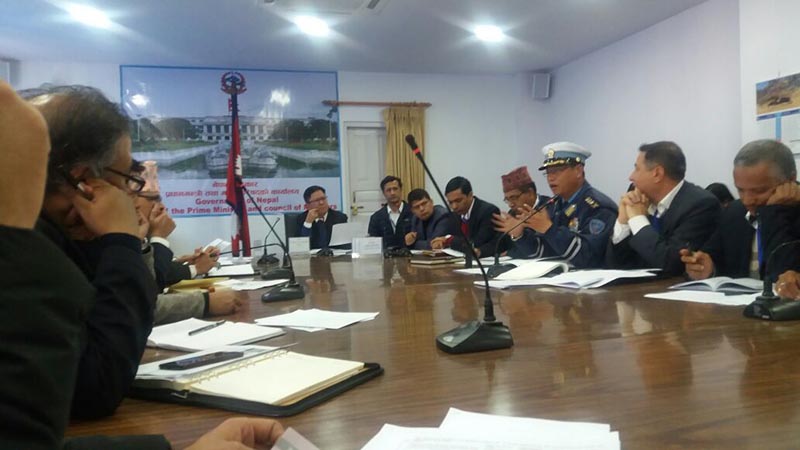Deteriorating quality of air in Kathmandu a major concern
KATHMANDU: A meeting held at the Office of the Prime Minister and Council of Ministers (OPMCM) to address the critical issue of increasing air pollution in Kathmandu Valley on Wednesday discussed the concerns arising out of the deteriorating quality of air in Kathmandu valley.
Experts and representatives from concerned Ministries; various other government, non-government, and private sectors; citizen representatives; and media persons attended the meeting led by Mahendra Man Gurung, Secretary at OPMCM.
The meeting discussed the threat and growing implications of air pollution in the Valley as the main agenda and further talked on how to record and mitigate its effects on the population, and the roles of different Ministries and agencies in creating an impact to control the negative effects of air pollution that is taking a highly hazardous form.
The major factors cited as contributing to the risky levels of air pollution were harmful and uncontrolled emission from vehicles, increasing levels of dust in the air caused by the on-going road expansion and Melamchi Drinking Water Project, emissions from industries, and smoke emitted from brick kilns, among others.
"We are the beneficiaries of pollution, and we are the beneficiaries of development," stating this, Secretary Gurung emphasised that we are all responsible to address this crucial issue with interventions from various authorities and agencies.
Out of 439 vehicles that were tested for emission, 197 vehicles failed the test, informed Umesh Ranjitkar, Superintendent of Police at the Metropolitan Traffic Division, approaching the issue of air pollution caused by harmful vehicle emissions.
In this connection, most of the participants at the meeting raised concerns about actions that need to be taken against such vehicles that fail emission test.
According to Durga Prasad Dawadi, Director General at the Department of Environment, while monitoring the air quality of Kathmandu, the contributing factor for Particulate Matter PM 10 is dust whereas for PM 2.5 is smoke. He added that the problem of air pollution is high during winter, and more so in the morning time.
Another key issue highlighted was the direct effect of air pollution on people's health. Air pollution has been cited as the cause of rampant cases of respiratory and heart diseases in the city at present. Government agencies were requested to recognize the situation as a public health emergency.
The major actions recommended by the meeting included efforts to complete road expansion works at the earliest; to continue vehicle emission testing in a systematic manner and to figure out what should be done with those that fail the test; to measure the contribution of brick kilns toward air pollution and how to monitor this; KMC and other municipalities to focus on garbage management to reduce burning of garbages; Department of Environment to make data related to air quality monitoring more accessible to the general public for raising awareness, and create emergency plans with attainable measures; to promote the use of electric vehicles; among others.






